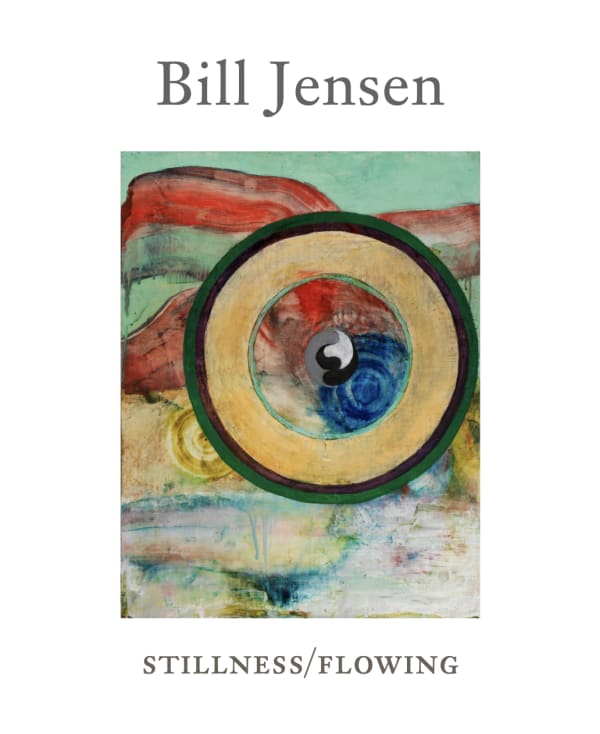Bill Jensen
Archive exhibition
-
OverviewCheim & Read is pleased to announce an exhibition of recent work by Bill Jensen.
Born in Minneapolis, Minnesota in 1945, Bill Jensen has lived and worked in New York since the early 1970s, and was one of the first artists to establish a studio in Williamsburg, Brooklyn. He came into prominence with “the return to painting” of the late 70’s and early 80’s. Intuitive and visceral, Jensen’s abstractions have long been admired for their unconventional compositions and profound sense of color. Saturated, densely worked surfaces, seemingly primordial in origin, transcend any sense of the struggle that Jensen attributes to his painting process. For Jensen, a painting is successful only when the artist’s initial impulse and his material’s properties harmoniously converge; this can sometimes take several years to achieve. Defined by an amorphous, ever-changing search for resolution, Jensen’s results are ultimately determined by the act of painting itself.
While characterized by the same unpretentious, process-driven investigations found in his previous work, Jensen’s new paintings are connected to distinctly identifiable sources; specific forms or compositional elements repeat in several works. This foresight and repetition is a departure for Jensen, as is his format: the majority of the new paintings and drawings are diptychs or triptychs. In discussion, he cites influences as varied as José Clemente Orozco, Clyfford Still, Francisco Goya’s black paintings, Chinese poetry, and the Dogon tribe of Africa. More specifically, in regard to the triptych configuration, he references the Rothko Chapel, a lesser-known Willem de Kooning altarpiece, and Ronald Bladen’s three-paneled painting Untitled, 1960-61 and his sculpture, Three Elements, 1965. Further, the Russian icon painter Andrei Rublev (c. 1360s–1430) has provided specific inspiration for Jensen’s “imagery.” For several canvases, as seen in The Trinity, Mandate of Heaven and Substance, Spirit and Shadow, all 2010-11, Jensen outlined the main element (three angels, seated at Abraham’s table) of Rublev’s icon painting, The Holy Trinity (1410), and repositioned it as a single, abstract shape floating on a multi-layered background of subtly colored ground. Recurring in this triptych and others, the form becomes a self-contained, almost reliquary-like symbol for Jensen’s working process.
The triptych format (which also reinforces the idea of the trinity) allows for multiple interactions between three painted surfaces. Jensen finds the possibilities of different arrangements liberating – each canvas can be re-positioned, rotated, or turned upside-down. More importantly, the format displaces any sense of the temporal or sequential, fracturing narrative constructs of “past,” “present,” and “future.” It also complicates the spatial continuity by interrupting the picture plane with distinct, physical edges; the painting’s three parts do not predictably “line up,” nor do they provide a sense of dimensional unity. Large in scale but not necessarily the same size, Jensen’s canvases create notches when hung together, further enforcing the time/space distortion. (The notches also reference altarpieces in Italy, and the Rothko panels.) Though rooted in Jensen’s profound appreciation for art history, his triptychs, like his other paintings, distill and transcend his many influences, infinitely extending on multiple paths beyond any one classification.
Other paintings in the exhibition are directly related to one of Jensen’s heavily worked etchings, Eclipse, 2011 in which a sandblasted plate was scraped and re-worked to remove blacks and add highlights. The resulting composition proved fruitful for Jensen, who copied and re-worked the abstraction in an etching called Sorrow, 2011 (which then led to the diptych series of paintings called Book of Songs). A graphic palette of grays and blacks dominate, and reference a series of line paintings that Jensen did in the 1990s. The line paintings have been a sustained influence over the last decade, providing a thread of continuity between Jensen’s various bodies of work. A series of black and white drawings (also diptychs and triptychs), made while Jensen was in Italy, emerge from the same palette. Washy, vaguely anthropomorphic forms permeate the paper; the organic abstractions allude to the less deliberate, searching quality of Jensen’s past work but also anticipate his move towards the larger triptych paintings.
All of Jensen’s works are characterized by his concern with the craft of painting. He makes his own paints (using a self-developed oil-based medium and pigment), allowing for a broad spectrum of colors (the wealth and variety of blacks provides an ample example) and controlling texture, saturation, and viscosity. Tools are created to fit his needs – butcher knives become scrapers, masonry-grade trowels become palette knives. Even in the more “planned” iconography of the triptychs, process is paramount, providing impetus for the works’ execution. For Jensen, process and result are inseparably linked: one is inconceivable without the other. This is the “struggle” that he strives to resolve, searching for the moment that material and content coalesce in unexpected, almost psychic unity. -
Selected Works
-
Publications
-
News
No news items are available relating to this exhibition.
-
Artists



















